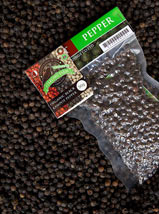Pepper cultivation has overcome a few obstacles in it’s time
It’s no wonder no one was growing pepper in Kampot after the 1970’s, the Vietnam War and the Khmer Rouge civil war both had a great effect on the province, partly due to it’s strategic significance between the borders of Cambodia and Vietnam, and the largely remote forested land provided cover for guerilla troops on any side.
The area around Starling Farm shares it’s own war stories and legends, the rural Cambodian people of the area – descended from the ancient pepper cultivators – were villagers and farmers fighting for decades to preserve their own heritage, homes and families.
Due to Kampot’s proximity to the Vietnamese border and coastline – and still being one of only two sea ports in Cambodia – the rural countryside and forested hills provided ideal cover for smuggled goods and weapons into Vietnam. Bomb craters started to litter the countryside as the US, at times controversially, made operations into Cambodia as various groups started using the area and establishing a base at the beginning of a complex political civil war situation that would last for decades. Herbicides were even dumped on the forests around the region to destroy the vegetation cover for the opposing fighters, it can’t be denied that pepper cultivation has taken a few hits.
Bombs to Foundations
One of these bombs, a regular just explosive one, fell on a part of the site that is now Starling Farm. Discovered while clearing the land in 2002 with fragments of the metal casing still lying at the bottom of the hole, the crater around 10 metres across made itself useful as a perfect foundation for rebuilding the traditional wooden farmhouse that stood derelict nearby. You can come see our Khmer farmhouse and the bomb fragments we found during a visit to the farm.
No Landmines Please
Before pioneering the revival of Kampot pepper cultivation, a more important first step was removing any landmines. The Khmer Rouge mined the area around Starling Farm, but thankfully they kept accurate records that survived the years and these were accessible to the local land owners. Almost all of the mines were found when the area was de-mined previously, but a couple are still unaccounted for to this day but would surely now be long buried with time.


